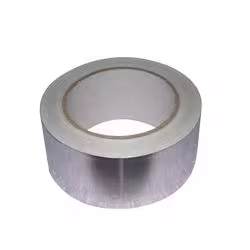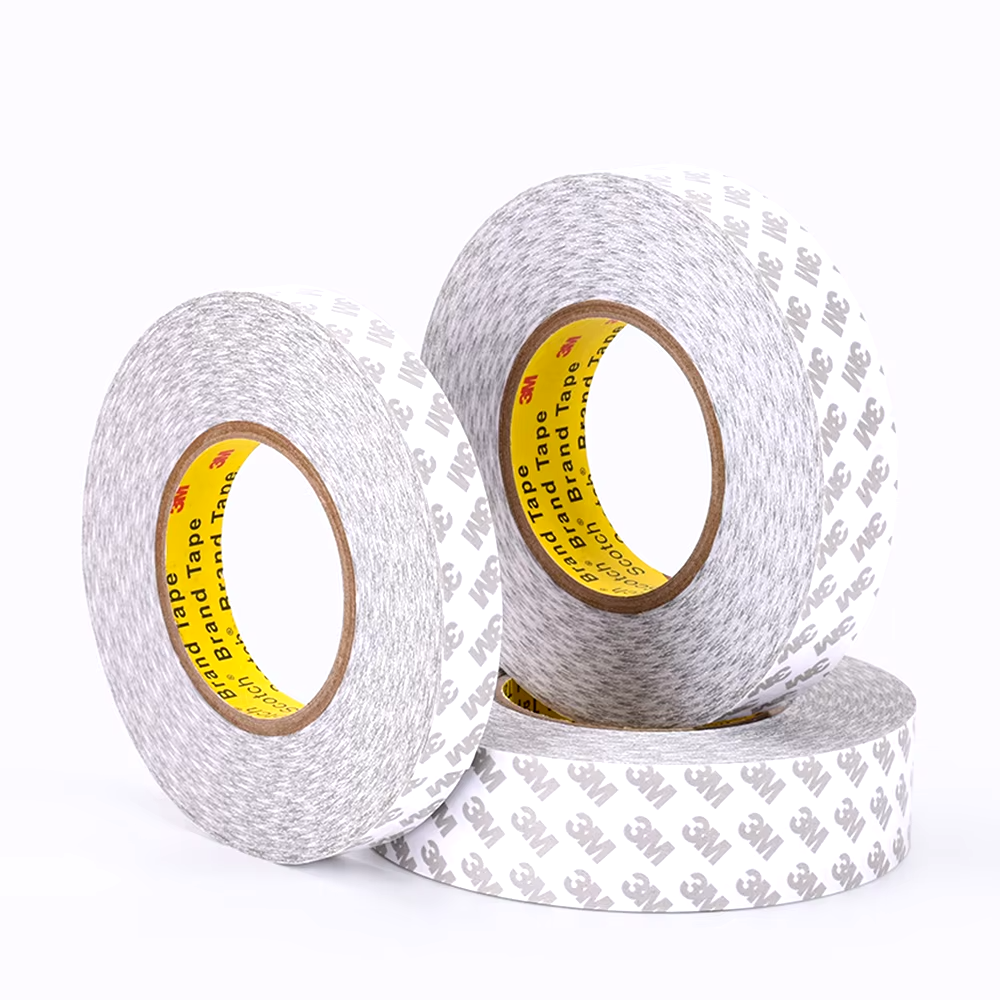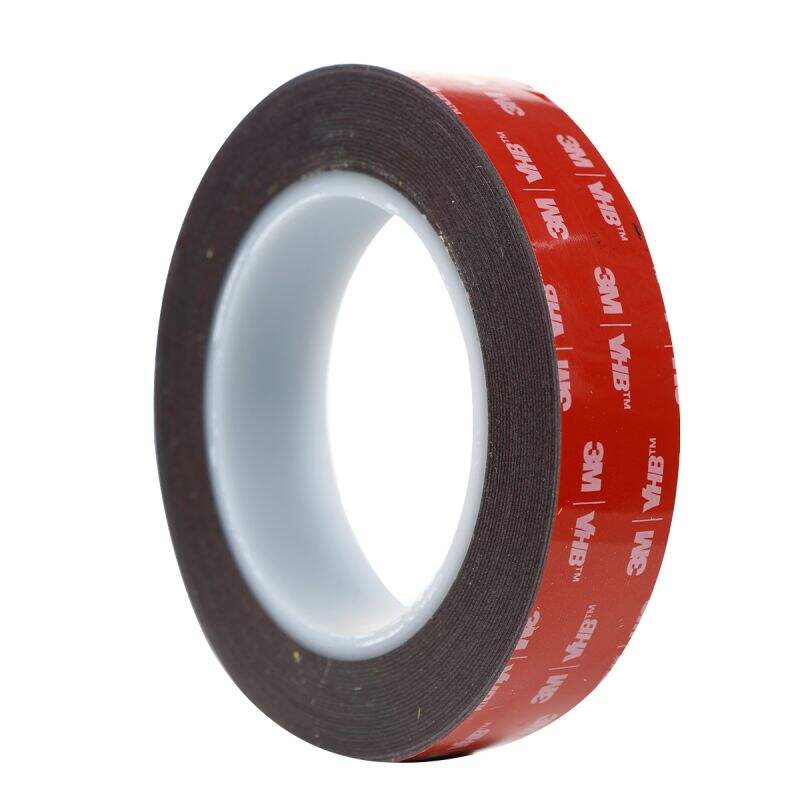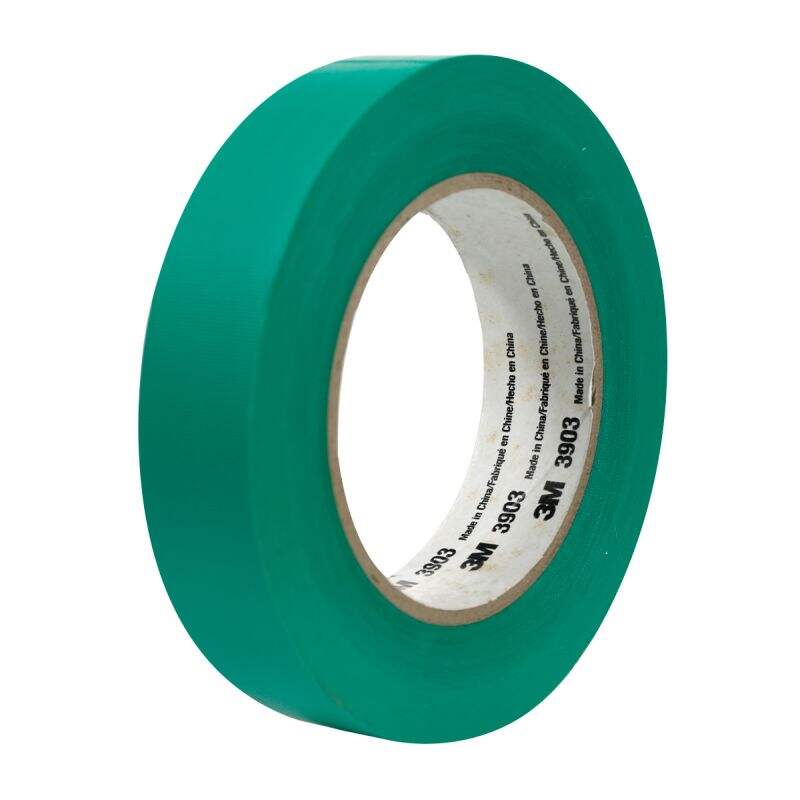Afraid of fire in your building? Flame - retardant tapes can give you that extra sense of security.
Understanding Flame-Retardant Tapes and Their Importance
How Flame-Retardant Tapes Prevent Fire Spread
Flame-retardant tapes are designed to withstand high temperatures and limit the spread of fire, which is crucial for minimizing damage during fire incidents. They undergo extensive testing to meet various fire safety standards, such as those from organizations like Underwriters Laboratories (UL) and the American Society for Testing and Materials (ASTM). Their chemical properties allow them to inhibit combustion, providing time for evacuation or response. These tapes are particularly valuable in industries like construction and manufacturing, where they are integrated into safety strategies for both passive and active fire prevention. By enhancing fire safety measures, flame-retardant tapes help protect people and assets.
Key Differences Between Flame-Retardant and Standard Tapes
Flame-retardant tapes are formulated with specific additives that enhance their fire resistance compared to standard insulating tapes, which can catch fire easily. These specialized tapes boast higher performance ratings in heat resistance and durability, making them essential under extreme conditions. When deciding between flame-retardant and standard tapes, understanding their applications and performance in fire or high-temperature scenarios is crucial for ensuring safety and compliance. Case studies and industry recommendations highlight situations where flame-retardant tapes significantly outperform standard options, such as in electrical insulation tape applications where fire risks are present.
Key Factors to Consider When Choosing Flame-Retardant Tape
Material Composition: Aluminum, Glass Cloth, and PVC Options
When selecting flame-retardant tapes, understanding material composition is crucial. Different materials, such as aluminum and glass cloth, offer varying degrees of fire resistance and temperature tolerance, impacting their suitability for specific applications. Aluminum tapes typically offer exceptional fire resistance and can withstand higher temperatures, making them suitable for high-heat environments. In contrast, PVC tapes, while effective, may not withstand as high temperatures as aluminum or glass cloth options. This requires careful choice based on project needs. A study by fire safety experts highlights that material choice significantly influences safety, especially under varying conditions.
Temperature Resistance Ratings for Home Applications
Understanding temperature resistance ratings is essential to ensure that flame-retardant tapes can handle the specific conditions they'll encounter in home applications. These ratings can differ significantly; for instance, some options exceed 300°F, making them ideal for high-heat environments like kitchens or furnace rooms. It's fundamental to consult reference literature from ASTM or product manufacturers to understand what temperature ranges different types of flame-retardant tapes can endure. This information ensures that consumers can select tapes that align with the environmental demands of their intended use.
Adhesive Strength and Surface Compatibility
The adhesive strength is a vital consideration when choosing flame-retardant tapes to ensure that the tape remains in place under challenges like heat or moisture, which can compromise safety. Equally important is surface compatibility, as tapes need to bond properly with materials commonly found in homes, such as wood, metal, or drywall. Using a guide or checklist can be immensely helpful to ensure users select the correct type of tape for their specific surface materials. Taking these factors into account will enhance the effectiveness of flame-retardant tapes in maintaining safety and compliance across different applications.
Top Flame-Retardant Tape Products for Home Use
3M™ High Temperature Aluminum Foil/Glass Cloth Tape 363: Industrial-Grade Protection
The 3M™ High Temperature Aluminum Foil/Glass Cloth Tape 363 is a top-tier product that expertly blends adhesive strength with aluminum-foil constructions, offering exceptional durability and fire resistance. This tape is widely recognized for its industrial-grade capabilities, as evidenced by user testimonials and rigorous testing results. These reviews highlight its effectiveness in both residential and commercial settings, demonstrating its prowess in preventing fire hazards. The tape's range of applications includes high-temperature insulation and protective sealing, both of which are vital in preventing unwanted heat transfer and ensuring safety.

3M 9080HL Double-Sided Adhesive Tape: Versatile Heat-Resistant Bonding
Designed for versatility, the 3M 9080HL Double-Sided Adhesive Tape offers a robust bond that can withstand high temperatures, making it an excellent choice for various home improvement projects. Both reviews and industry recommendations praise this tape for its ability to safely bond heat-sensitive materials, thereby mitigating common issues associated with inferior alternatives. Its double-sided nature adds to its appeal by allowing for clean applications that maintain the aesthetics of home projects while ensuring fire safety.

Installation Best Practices for Flame-Retardant Tapes
Surface Preparation Techniques for Optimal Adhesion
For flame-retardant tapes to be genuinely effective, proper surface preparation is crucial. Preparing the surface adequately enhances both adhesion strength and the tape’s fire-resistance properties, ensuring maximum safety. To achieve optimal adhesion, it is advisable to follow a sequential cleaning process: start by removing dust, oils, and contaminants that can interfere with the adhesive. Using appropriate cleaning agents, such as alcohol-based solutions, helps ensure surfaces are residue-free and ready for application. Experts recommend these meticulous preparation steps because they significantly improve the tape's durability and protective capabilities in high-risk areas.
Avoiding Common Application Mistakes in DIY Projects
Common errors during the application of flame-retardant tapes can severely compromise their effectiveness, particularly in DIY settings. A typical mistake involves applying tape onto uneven surfaces, which can lead to inadequate adhesion and reduced fire-resistance performance. An interesting statistic reveals that failure rates due to improper tape application can reach as high as 30%. To minimize such risks, it is beneficial to follow a simple checklist of dos and don’ts. For example, always adhere to the manufacturer's specific temperature limits and ensure surfaces are clean and dry before application. This checklist serves as a handy reference for DIY enthusiasts, helping them avoid common pitfalls and maximize the safety of their projects.
Safety Standards and Compliance for Home Fire Protection
Understanding UL 723 and ASTM E84 Certification
UL 723 and ASTM E84 are essential standards that evaluate the fire resistance properties of building materials, including flame-retardant tapes. These standards help consumers identify products capable of mitigating fire risks in their homes. Products like flame-retardant VELCRO® need to meet stringent criteria regarding burn rate and smoke development to achieve these certifications. Statistics from fire safety compliance indicate that certified products significantly reduce the fallout in fire incidents, underscoring their importance in home safety measures. By selecting items that adhere to UL 723 and ASTM E84, homeowners can ensure better protection and peace of mind.
How to Verify Compliance With Local Building Codes
Ensuring that products comply with local building codes is crucial for safety and legal assurance during renovations and constructions. Homeowners and contractors can access verification information via municipal records or online databases. To simplify this process, one should follow these steps:
- Research the specific code requirements in your locality.
- Consult municipal documentation or online portals for compliance information.
- Reach out to local authorities or professional advisors if further validation is needed.
By rigorously following these steps, individuals can uphold fire protection standards tailored to their area's regulations, enhancing both safety and reliability.
Flame-Retardant Tape vs. Alternative Fireproofing Materials
Comparing Performance With Electrical Insulation Tapes
When comparing flame-retardant tapes to electrical insulation tapes, several significant differences emerge, particularly in their performance under fire conditions. Flame-retardant tapes excel in heat resistance and flame propagation, making them a crucial choice in environments susceptible to fire risks. Studies have shown that the proper selection of materials can drastically minimize fire risks and potential damages, especially in high-stakes settings. Real-world examples further illustrate the importance of making informed tape choices; home improvement professionals often face dire consequences when opting for the wrong type. Notably, the choice of materials is paramount in maximizing fire safety.
When to Use Rubber Tapes or Silicone-Based Solutions
Rubber tapes and silicone-based solutions each offer distinct benefits in specific applications. These materials are particularly advantageous for sealing joints against moisture while ensuring fire resistance. When selecting between these alternatives, it's essential to consider factors such as the temperature range, adhesion needs, and specific application requirements. Aligning performance characteristics with recommended applications can provide clarity and assist readers in making informed decisions. A summary table can further simplify the understanding of their benefits in various contexts, ensuring that readers choose the right solution for their fireproofing needs.
Practical Home Applications for Flame-Retardant Tapes
Securing Wiring in Electrical Panels and Appliances
Flame-retardant tapes are crucial for securing electrical wiring in residential panels and appliances. By preventing short circuits, these tapes significantly reduce the risk of electrical fires. In fact, statistics indicate that electrical malfunctions are a leading cause of home fires, underscoring the importance of using fire-resistant materials. Implementing flame-retardant tapes can provide peace of mind by minimizing these hazards.
- In residential settings, securing electrical wiring properly can mean the difference between safety and disaster.
- Visual examples, such as diagrams or images, can guide homeowners in the effective application of these tapes.
Fireproofing HVAC Ductwork and Plumbing Installations
Flame-retardant tape plays a pivotal role in insulating HVAC ductwork and plumbing installations against fire risks. Given the flammable nature of certain HVAC system components, employing such tapes can shield against fire hazards. Proper application guidelines can enhance both safety and efficiency in heating systems.
- Advisories from industry experts emphasize the strategic placement of tape to maximize fireproofing effectiveness.
- Including case studies that highlight successful fireproofing initiatives can provide practical insights for those looking to improve residential HVAC systems.
Temporary Protection During Welding or Renovation Projects
Using flame-retardant tape as temporary protection during welding or renovation projects is a smart strategy to avoid damage by sparks or heat transfer. Real-life incidents have demonstrated how these tapes can avert serious injuries and property loss. Homeowners planning renovations can benefit from step-by-step instructions on using these tapes effectively in high-heat scenarios.
- Flame-retardant tapes act as barriers that can dramatically reduce heat-related damages during temporary works.
- The allocation of safety measures during renovations can be crucial in preventing unforeseen accidents related to heat exposure.
Recommended Products
 Hot News
Hot News
-
Pakistan Business Delegation Visits Our Factory, Seals Partnership With Immediate Deposit
2025-04-29
-
TAPE Team Conquers Shenzhen’s Phoenix Mountain: Unity, Ambition, And New Heights In 2025
2025-02-21
-
The Role of Polyimide Electrical Tape in Electronics Insulation
2025-01-21
-
High Strength Double-sided Tape for Secure Bonding
2025-01-15
-
Durable Foam Tape for High-Performance Applications
2025-01-10
-
High Temperature Resistant Masking Protective Tape for Extreme Conditions
2025-01-01






